I’m sitting outside writing in a t-shirt, spring is here! I mean, it has turned chilly now and I’m defiantly carrying on writing this blog when I want to get a hoodie but it was hot and sunny earlier I promise.
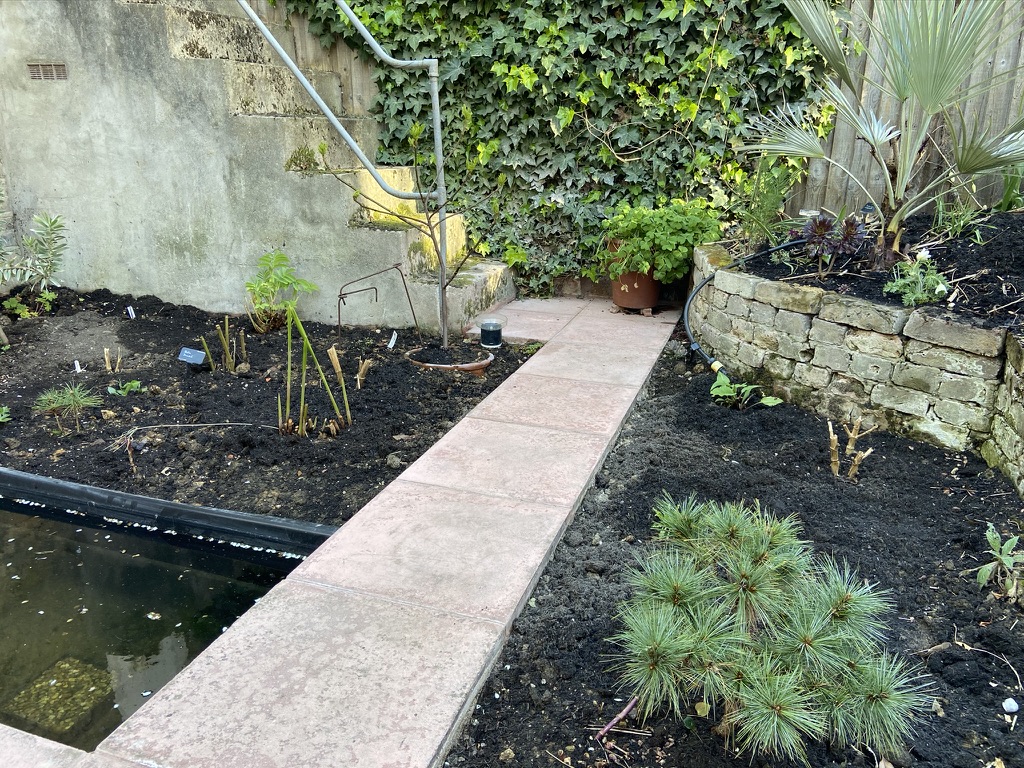
I was looking forward to spending time in our new layout garden this summer but never had I expected how important it would become as our lives changed with the lockdown. The last few weeks have been confusing for us all and it’s only this week, thanks to support from many people, that I’ve accepted what’s going on and become calm. Our garden has been important in this process too, giving me something to focus on.
Ants in my plants
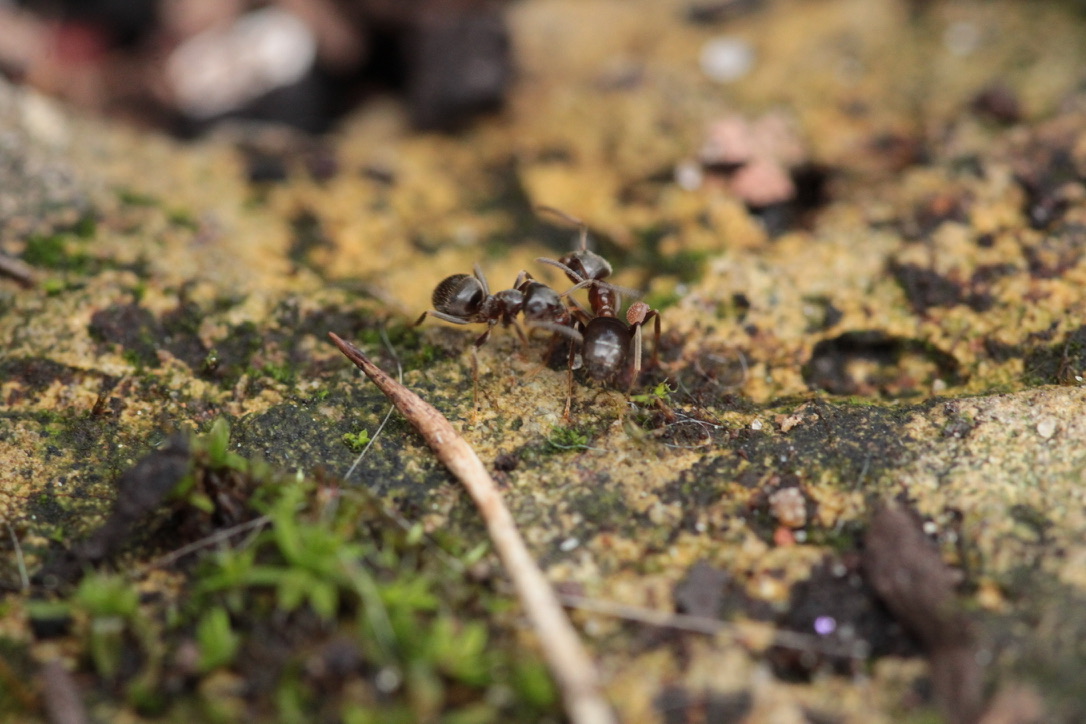
I’ve grown incredibly fond of ants, I don’t know why, probably just part of my growing love for the increasingly diverse micro ecosystem in our garden. Out in the wild you see little hummocks in meadows formed by ant colonies over many years. In our garden we have the black garden ant, the most common in gardens, and I noticed they’d woken up about a fortnight ago. I spent about an hour trying to photograph them but of course, no photo was in focus as they’re so tiny! They make homes in our raised bed and pots. I like the way they communicate and help one another. While they do farm aphids on various plants, they don’t cause any other problem so I’m happy for them to go about their business. In fact, they help churn the soil.
Hoverflies
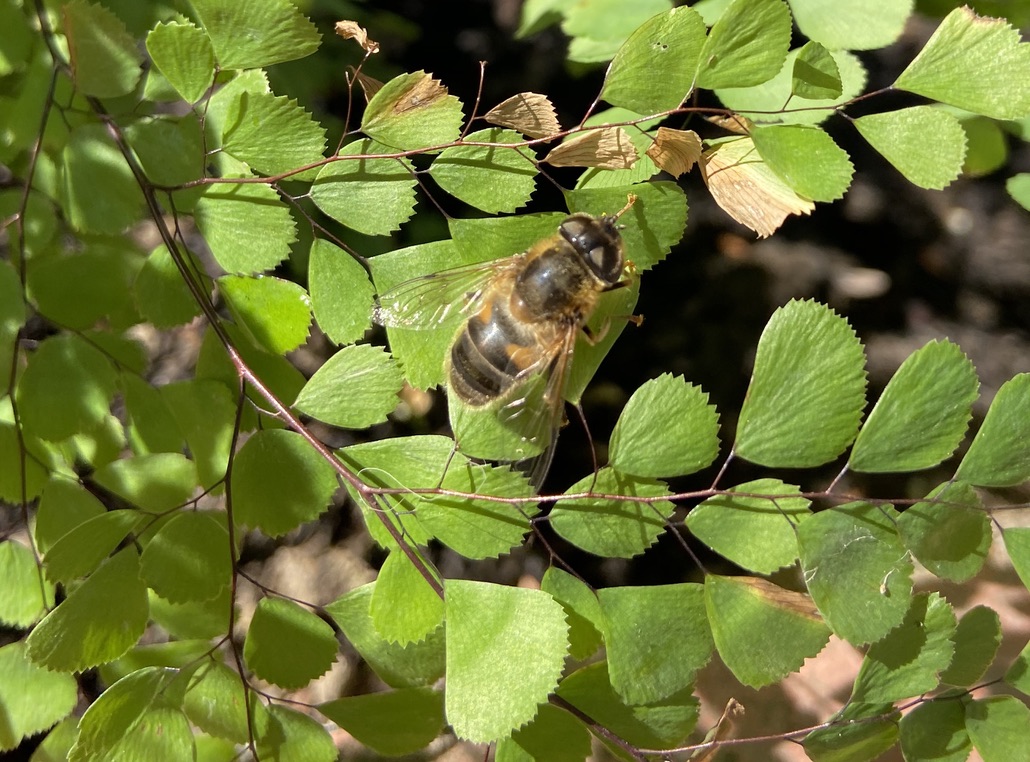
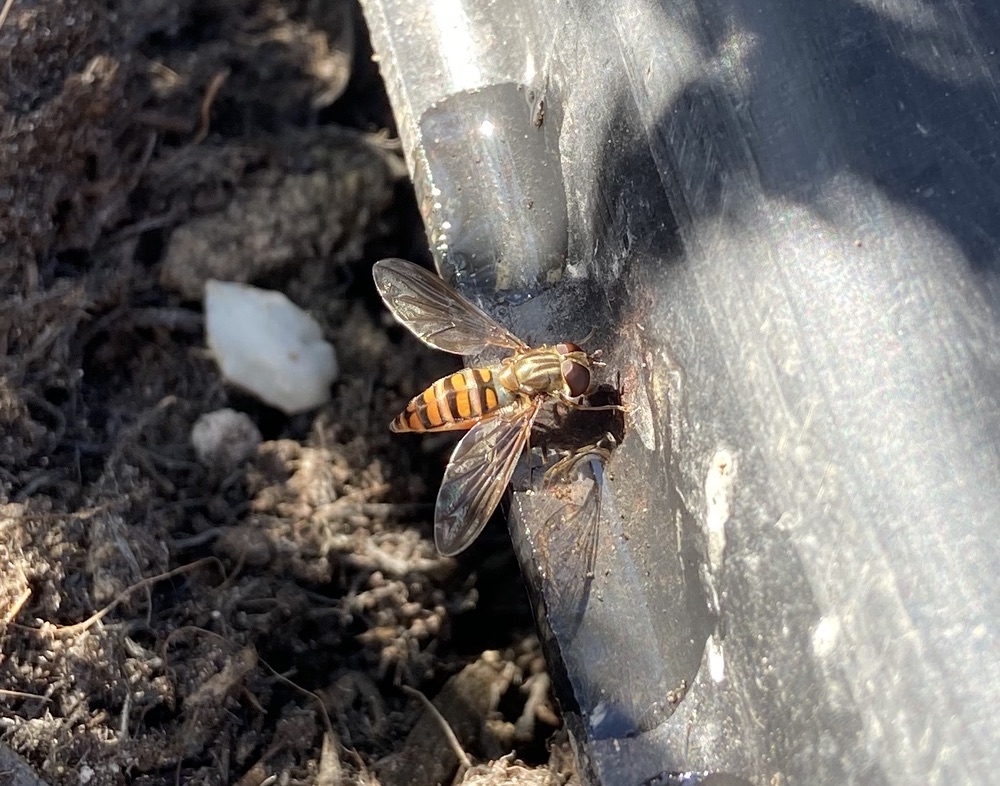
One of my favourite groups of insects has always been the hoverfly. Probably a throwback to childhood interests in harrier jump jets and helicopters, hoverflies are pretty cool. It was great today to see a number of different hoverfly species again. Over the years I’ve been gradually increasing their numbers with the types of plants I grow.
A few interesting things
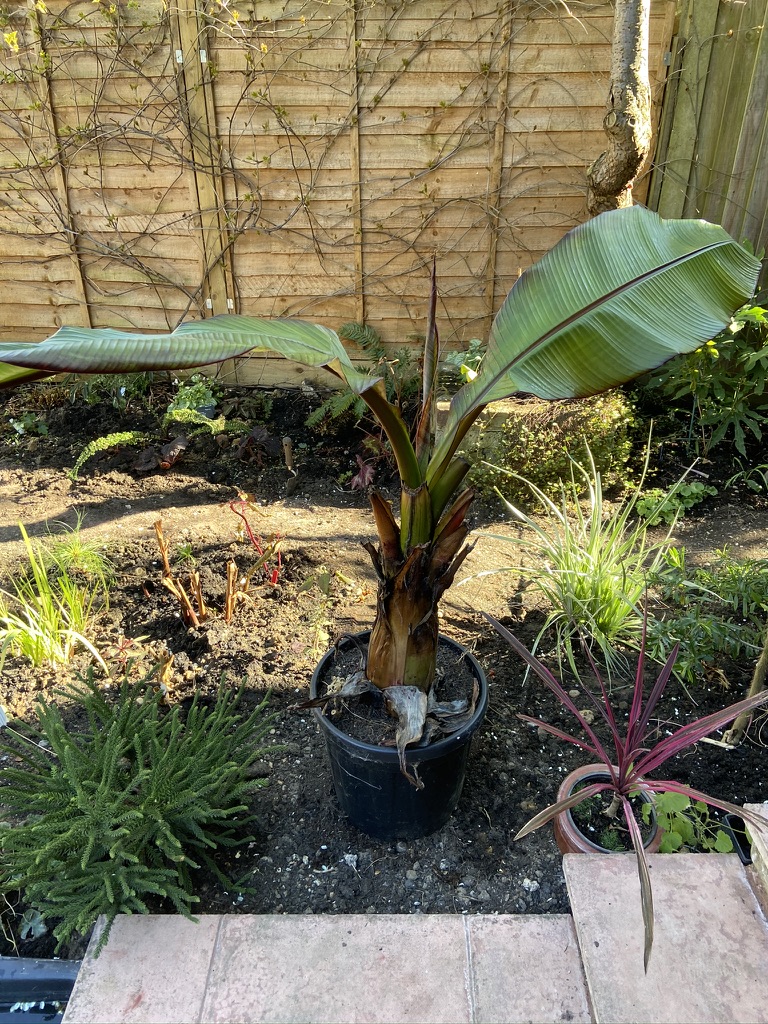
It’s always tricky guessing when it’s warm enough to put tender plants outside here in London. We’re highly unlikely to have another frost now and night time temperatures look to largely be over 5C from now on – which is the magic deciding factor. I’ve popped my Ensete ventricosum ‘Maurelii’ outside today. If on the off chance we do have a sudden cold snap I’ll run outside to cover it or bring back in.
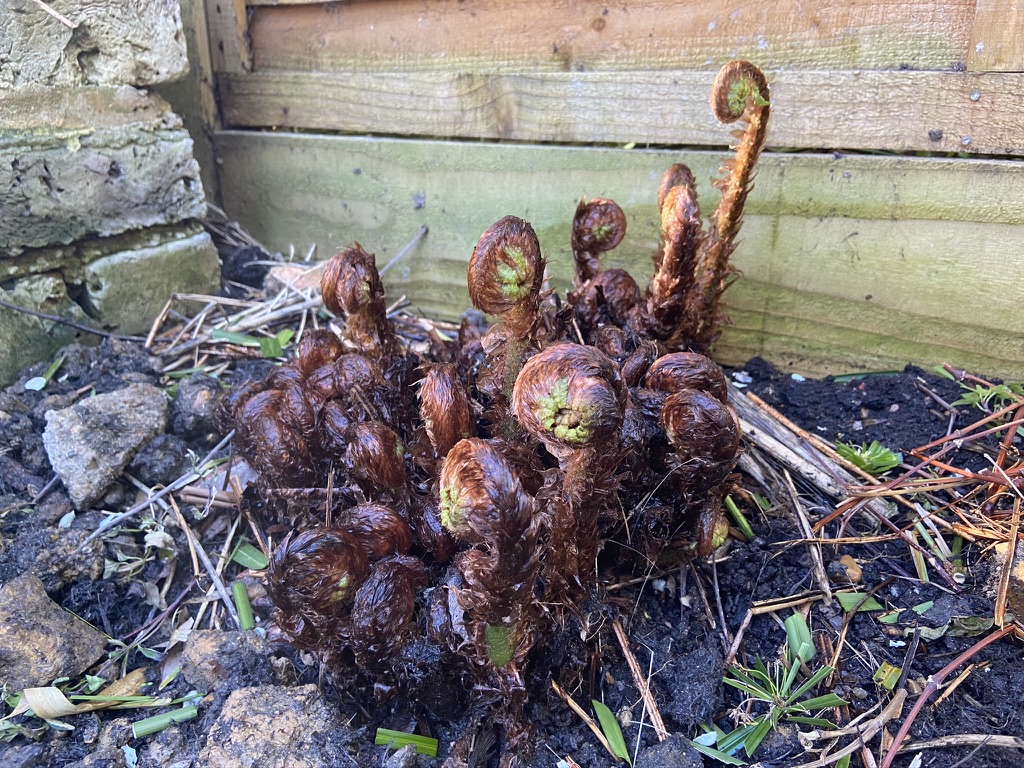
Most of our ferns are showing signs of growing now and the above wooly Polystichum setiferum always looks incredible at this time. It really is becoming a huge clump.
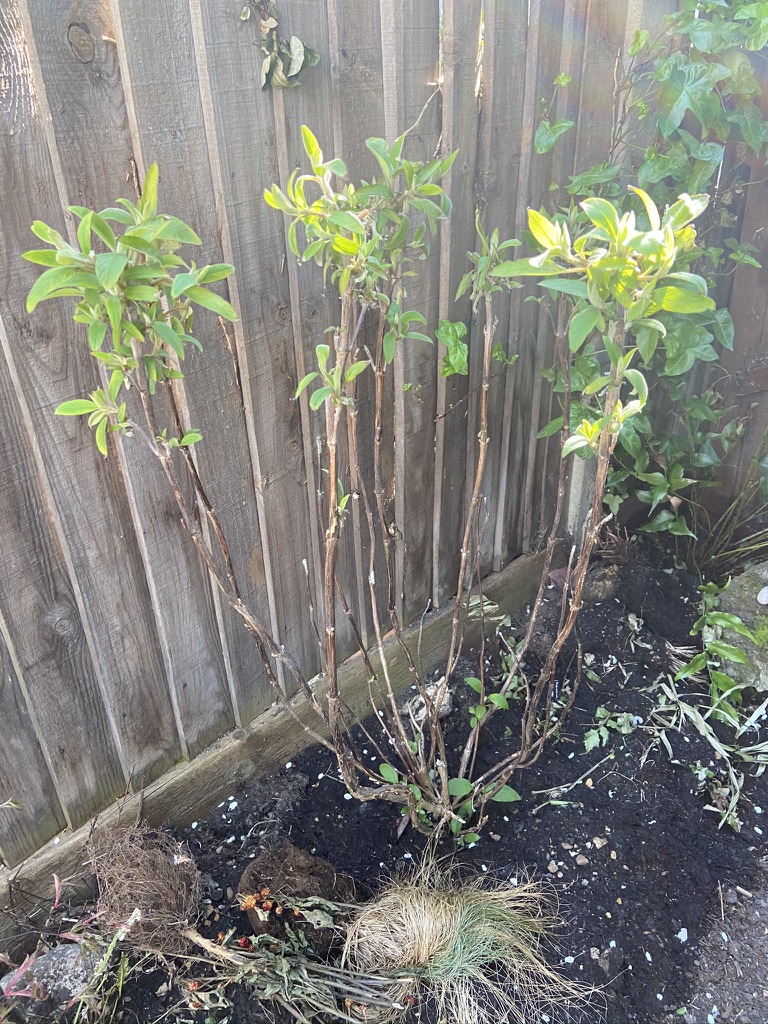
Unveiling our new Hydrangea. Yes, you read that right, I’ve added a Hydrangea! Hydrangea aspera Villosa Group, which is one of my favourites with bluey-purple flowers and tropical look leaves. It’s part of a new wave of ultraviolet flowers I’ve decided to introduce this year.
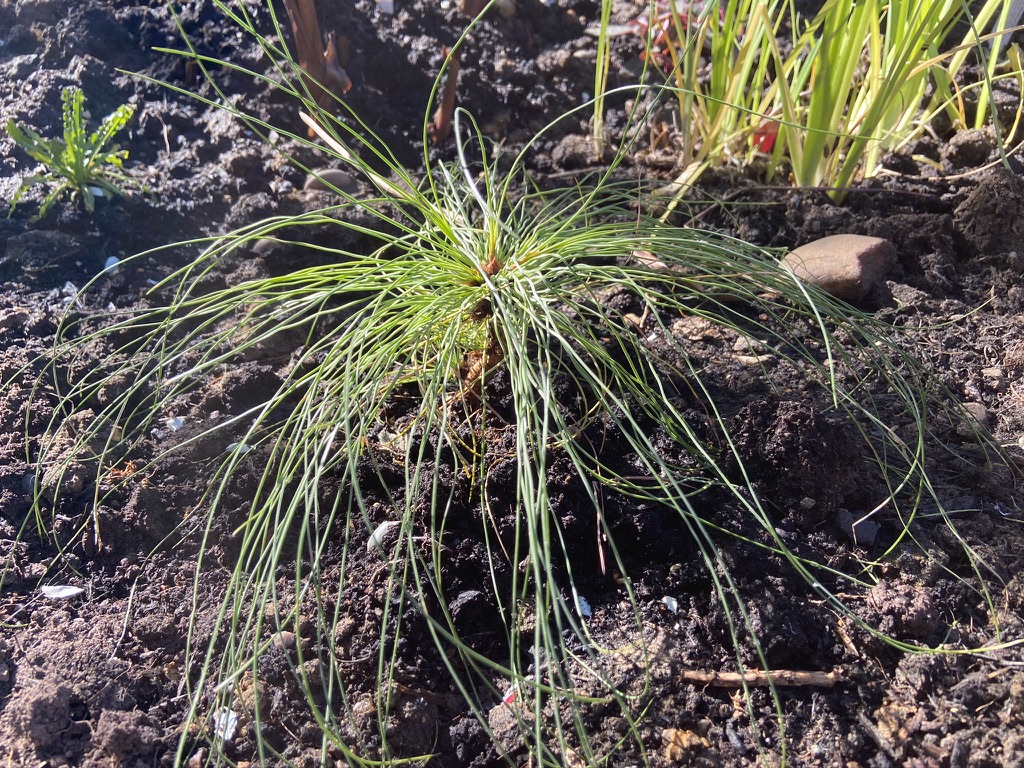
With our increased ground to plant into since lifting the old patio, my conifer collection is venturing out of their pots for the first time. Most I’ve grown from seed including the Pinus montezumae above. Now, this tree is obviously far too big to grow in our tiny garden. Left to its own devices it would swamp the whole neighbourhood. Instead I plan to train them, they will be niwaki – meaning sculpted garden trees. Though I’ll train them in a natural shape only to contain their growth.
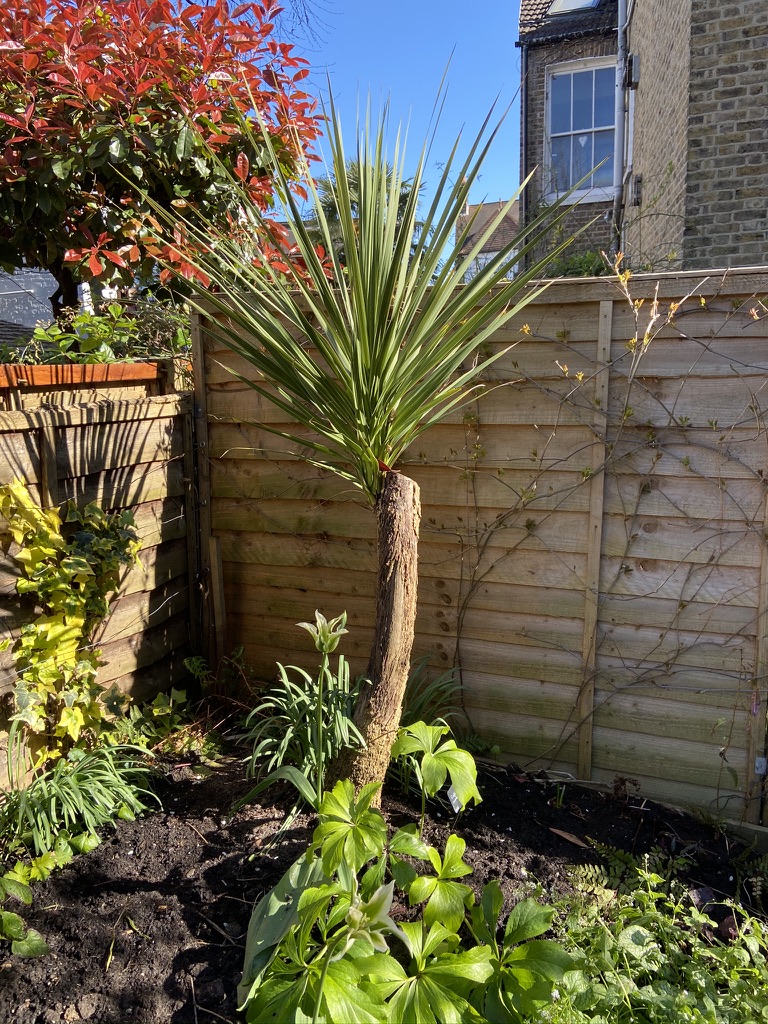
A year ago I gave our Cordyline australis a severe hacking and many people have been asking how it’s been getting on so here’s a photo. It produced at least 30 new shoots which I kept snapping off except for this shoot I wanted. Fairly soon the leaves will droop enough to hide the stump created by the cut. Cordylines are tough trees, if you hack them back they will reshoot vigorously. I don’t really like cut branches or trunks like this – they’re pretty ugly – and I only did this to save the tree as it was leaning over the fence and because I knew it would eventually cover the cut.
Divide and conquer
Part of me is changing as a gardener. Although I love growing new plants, I’m increasingly valuing the propagation of plants I love and have had in the garden for years. Combining an attachment and romanticism with the fact I know these are tried and true plants that I know I like. I won’t stop growing new things – designing means I trial vast numbers of new plants – it’s just a sign, I believe, that I am becoming a better gardener.
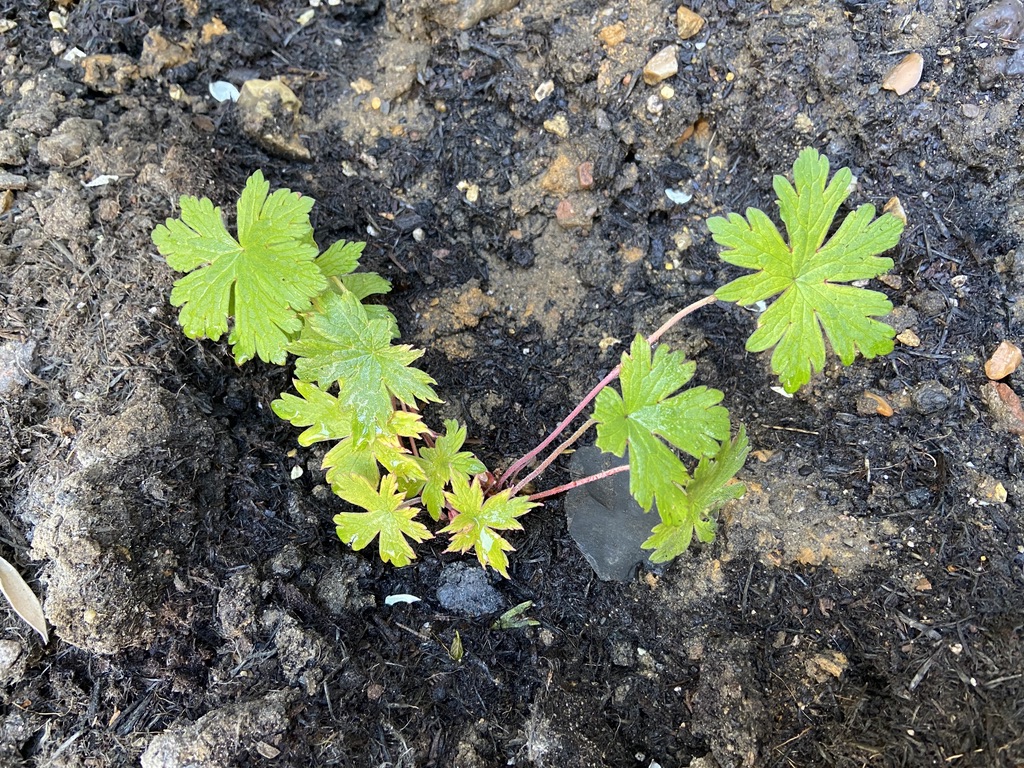
Dividing my Geranium ‘Ann Thompson’ has brought me untold excitement this week! I’ve had it for years and was thinking of ordering more geraniums to try when I suddenly thought, why not give it a go? Digging it out, I found the root system thin and spindly but I could cut carefully to create four new plants. All of which, dotted around the garden, are happily growing as if nothing even happened. I never paid much attention to geraniums but I’m planting more and more of them and a visit to Great Comp Garden last year opened my eyes to how they can be used to spectacular effect.
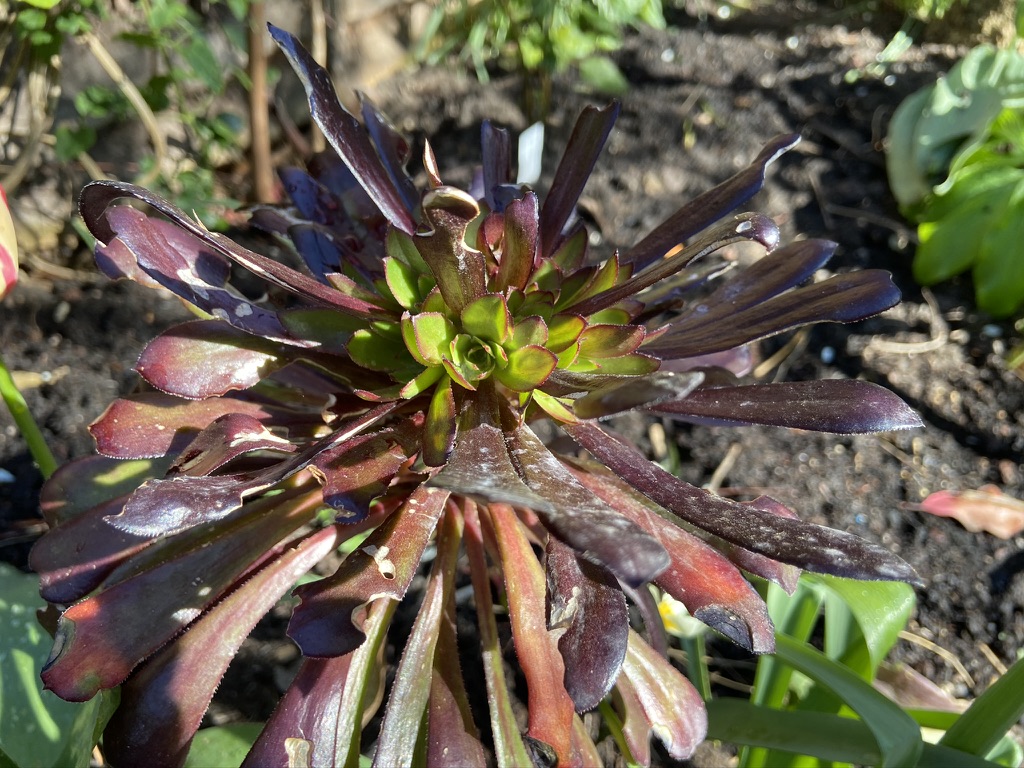
I have lots of cuttings of Aeonium ‘Zwartkop’ that I rooted a couple of years ago and have since grown outside year round here in tropical Clapham, planted in different parts of the garden. This year they’ve all spontaneously burst into large numbers of shoots which will make for wonderful large branched plants this summer.
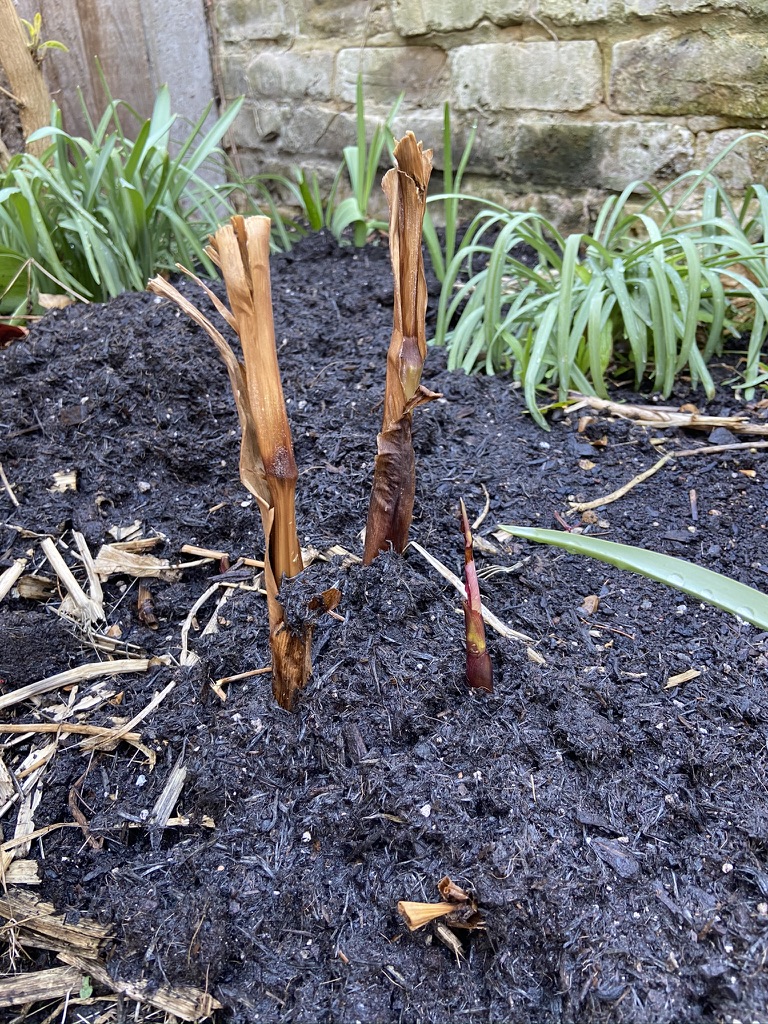
Another plant I’ve divided is Canna ‘Shenandoah’ which I bought as a tiny plant last spring. So vigorous I’ve split it into two clumps opposite each other across the garden.
Seedlings
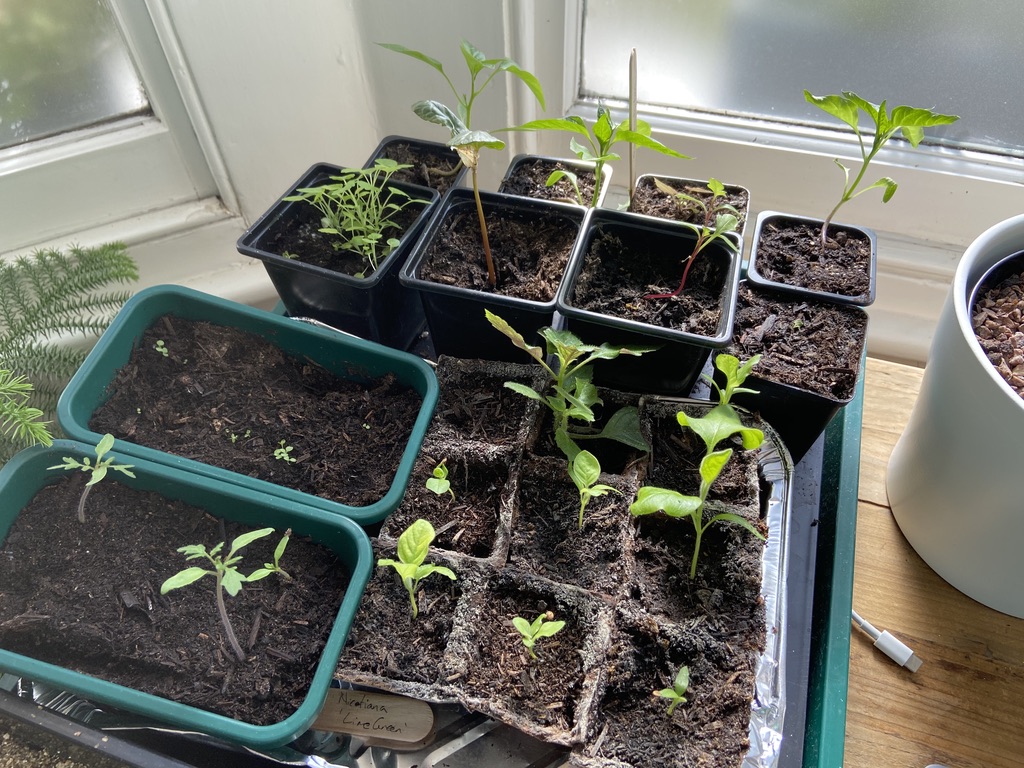
Tomatoes, aubergines, Nicotiana, Leonotis, padron peppers, Ricinus and Rhodochiton.
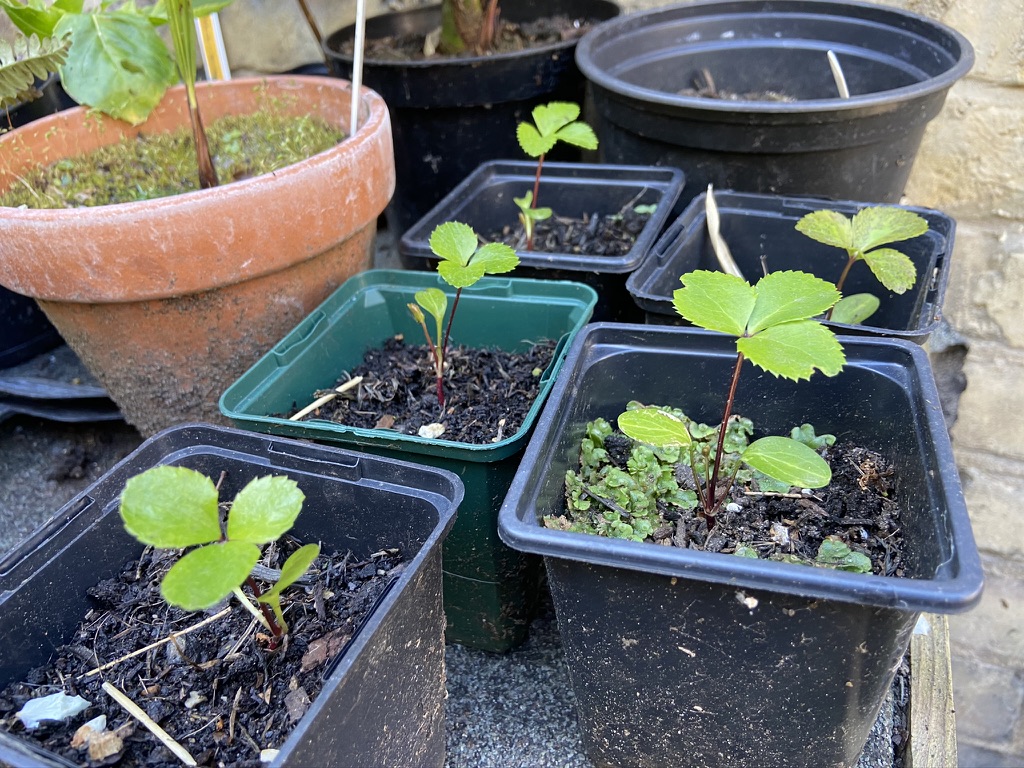
Self sown Hellebore seedlings that I potted up to plant elsewhere later.
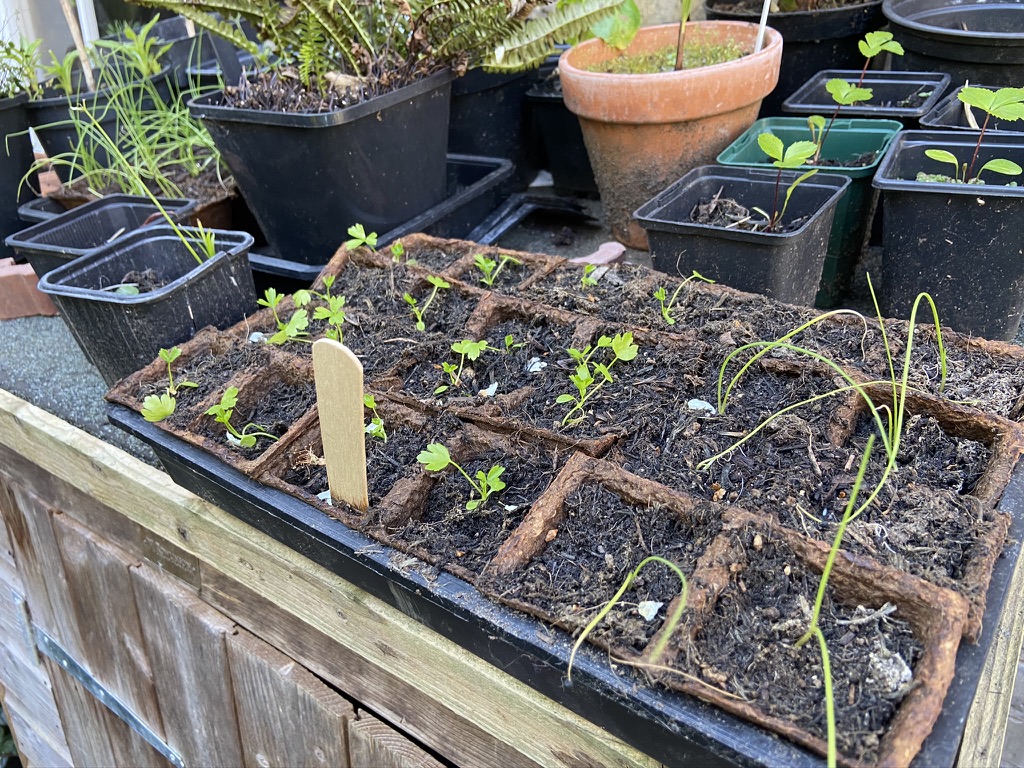
Celeriac and onions.
Pretty garden things this week
There’s lots growing on in our garden at the moment, more than you would care to read, so I’ll stop here. Instead I’ll leave you with some photos from across the garden.
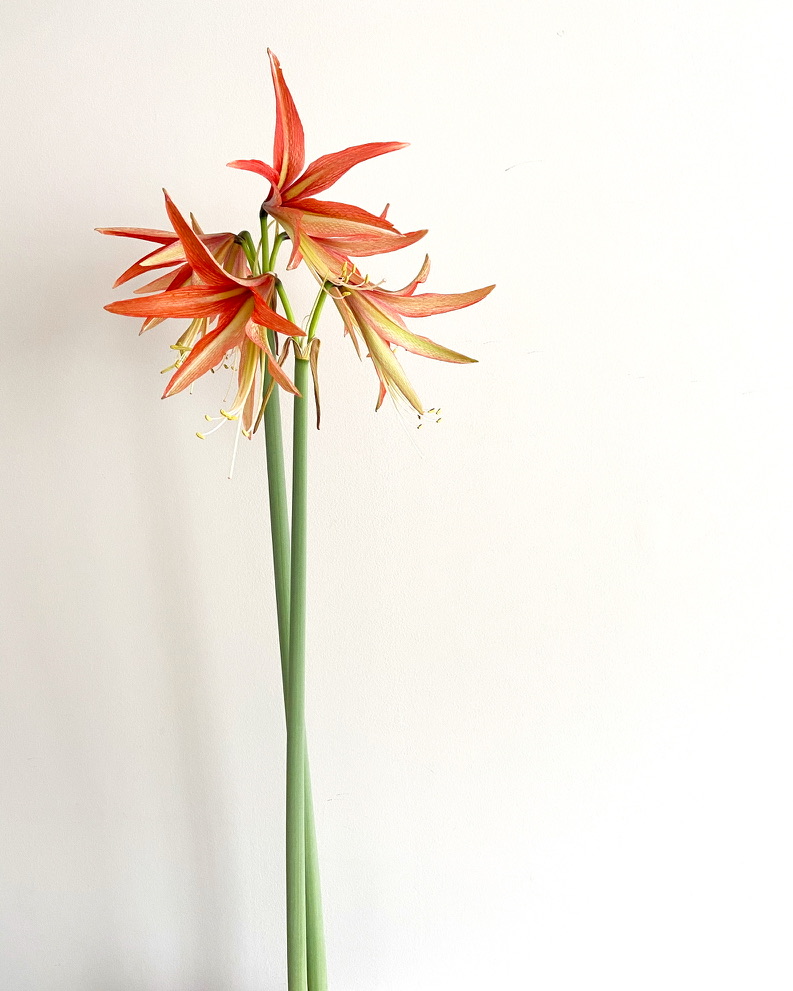
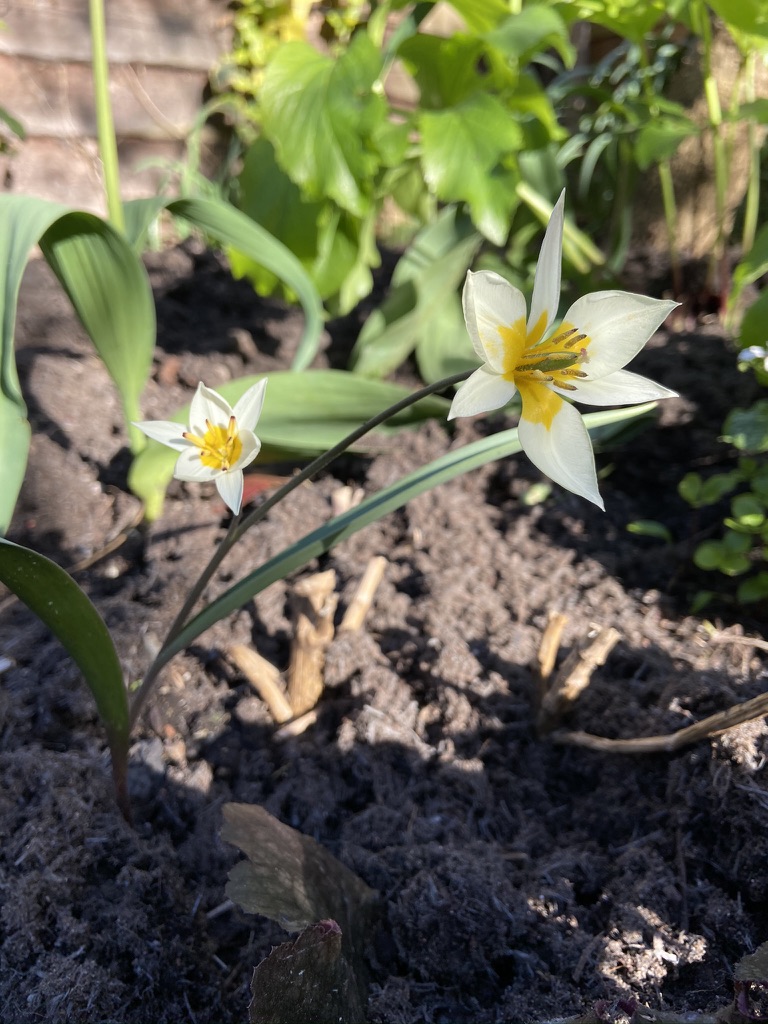
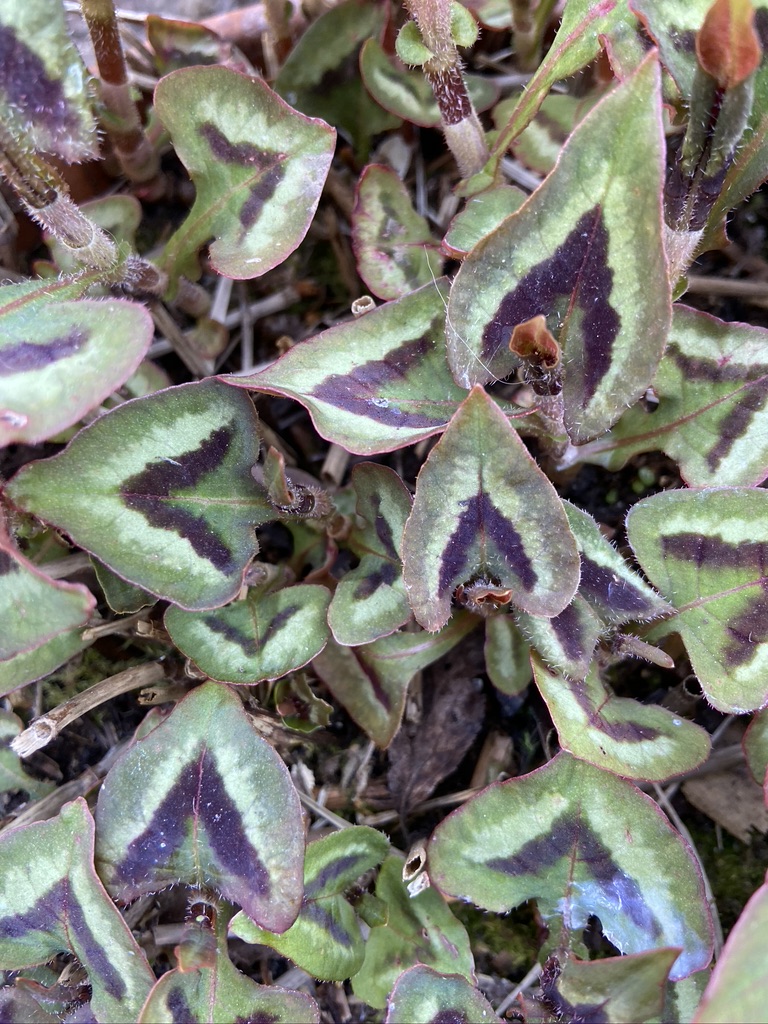
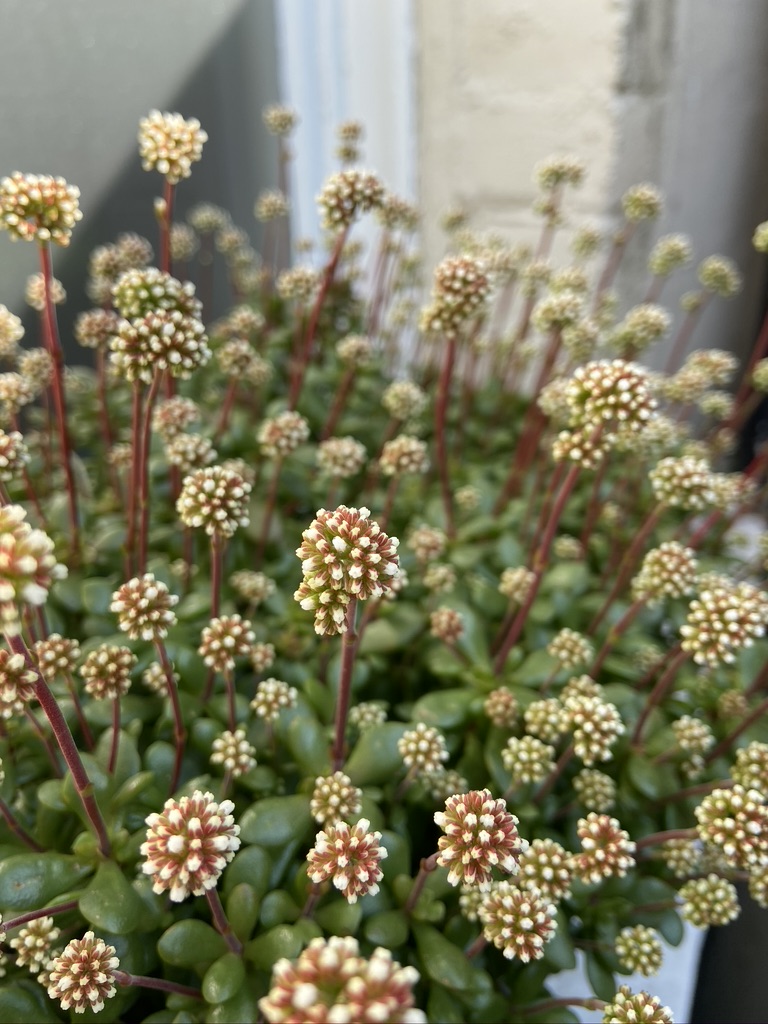
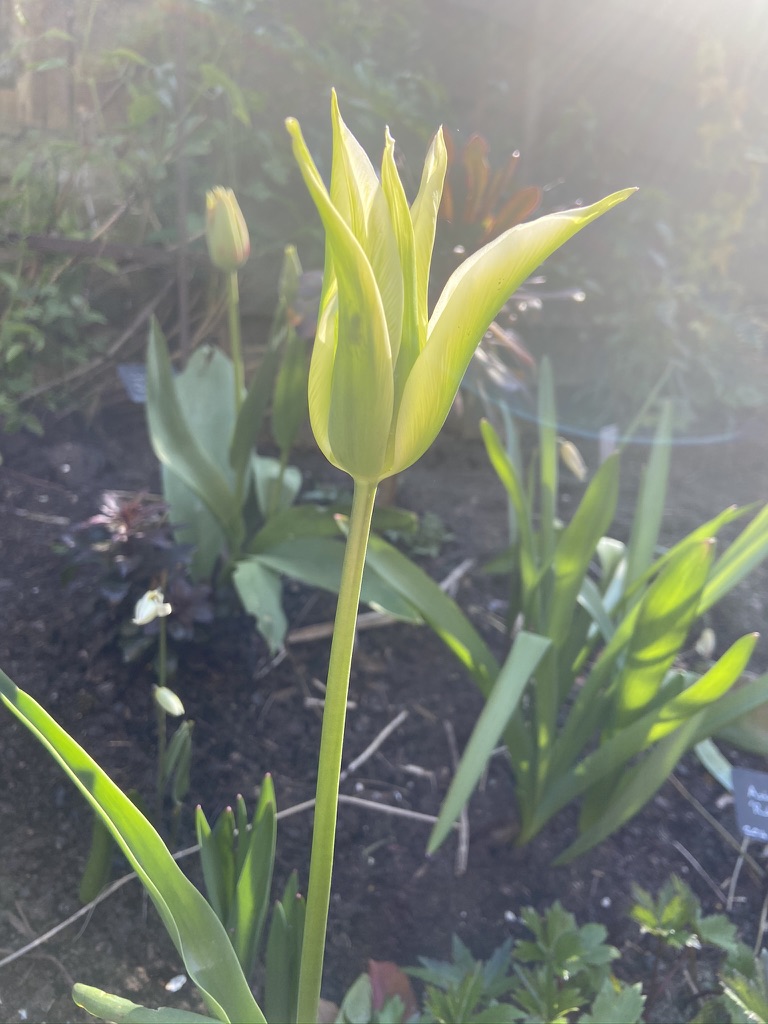
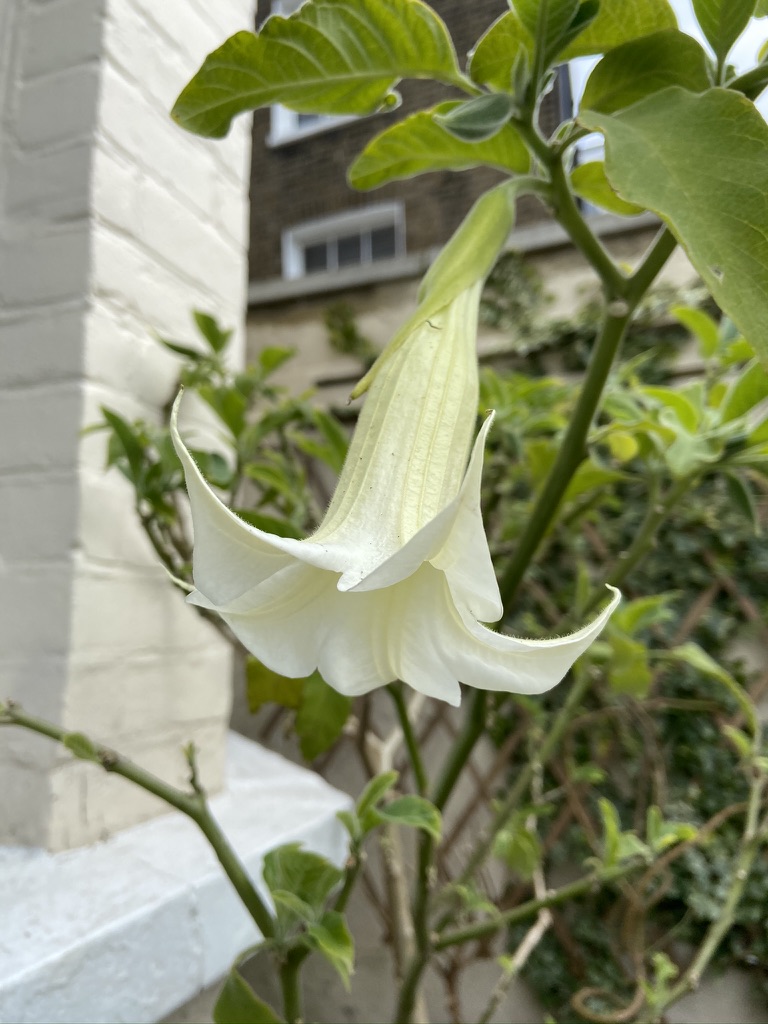
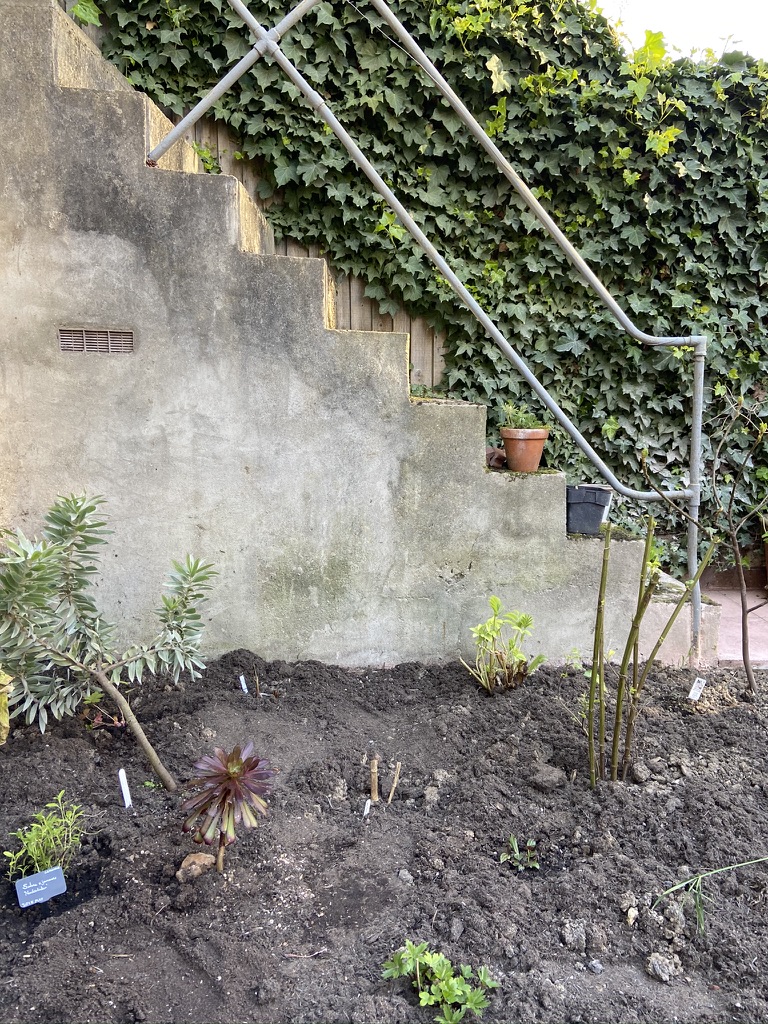
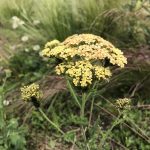
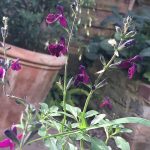
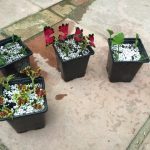
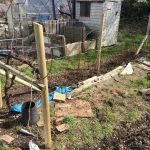
I’ll try to warm up to ants as well, good thoughts you shared. Great photos also, I always love the photos. Question: peat moss bales were an expensive luxury when I was younger, so I bought only 1 bale every 4-5 years. But they made for wonderful loamy garden beds. So please explain why these days using peat is so unpopular. I actually can’t even find any. Why not? Thanks.
Thanks Keith. Peat is taken from peat bogs which are precious natural habitats for wildlife and also massive carbon stores. Taking peat from these kills wildlife, reduces habitats and releases tonnes of carbon into the atmosphere adding to climate warming. All of the peat free alternatives are as good, so essentially, it’s a bad thing all round. I think I’ve explained this a few times now – it’s best to avoid peat.
Jack